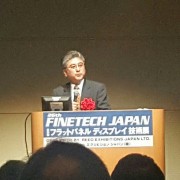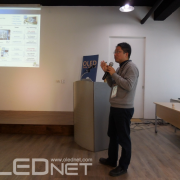LCD or OLED…JDI CTO “Will Seize Mobile Market though LTPS”

JDI’s CTO Emphasizing LTPS Technology(Tokyo=OLEDNET)
Hyunjoo Kang / Reporter / jjoo@olednet.com
As a response strategy for the future smartphone display market, Japan Display (JDI) nominated LTPS evolution. This is to continue the position that JDI achieved within the LCD market through LTPS technology in the OLED market using Advanced backplane technology.
JDI’s CTO, Hiroyuki Ohshima gave a keynote speech titled Future Perspective for Small to Medium-sized Displays in FineTech Japan 2016 (April 6-8), and emphasized that they will continue developing backplane technology prowess.
Furthermore, Ohshima stressed that whether the mobile display’s frontplane is IPS LCD or OLED, the key backplane technology is LTPS. he explained that unlike LCD’s stabilized technology, OLED still has issues that need to be solved such as high uniformity and stability. However, he added that OLED is the best technology to achieve flexible display comparing the merits of LCD and OLED.
Ohshima told the attendees that LTPS is a widely used technology applied to both LCD and OLED, has high electron mobility compared to other TFT technology, and high resolution, low power, etc. are possible. From 2015, JDI has been using 60 Hz Gen1 LTPS technology, and expected to use 30 Hz Gen2 Advanced LTPS from 2016, and Gen3 with 15 – 5 Hz from 2017. The evolved technology can greatly reduce energy consumption compared to the previous versions of the technology.
Furthermore, Ohshima is planning to respond to the small to medium-sized display market by developing in-cell touch, low power technology, etc. He added that small to medium-sized display, represented by smartphone, requires the integration of developed technology
FineTech Japan 2016 (April 6-8) is a display technology related exhibition held in Tokyo Big Sight. The 26th annual event is participated by approximately 260 companies including Samsung Display, BOE, and Japan Display.



